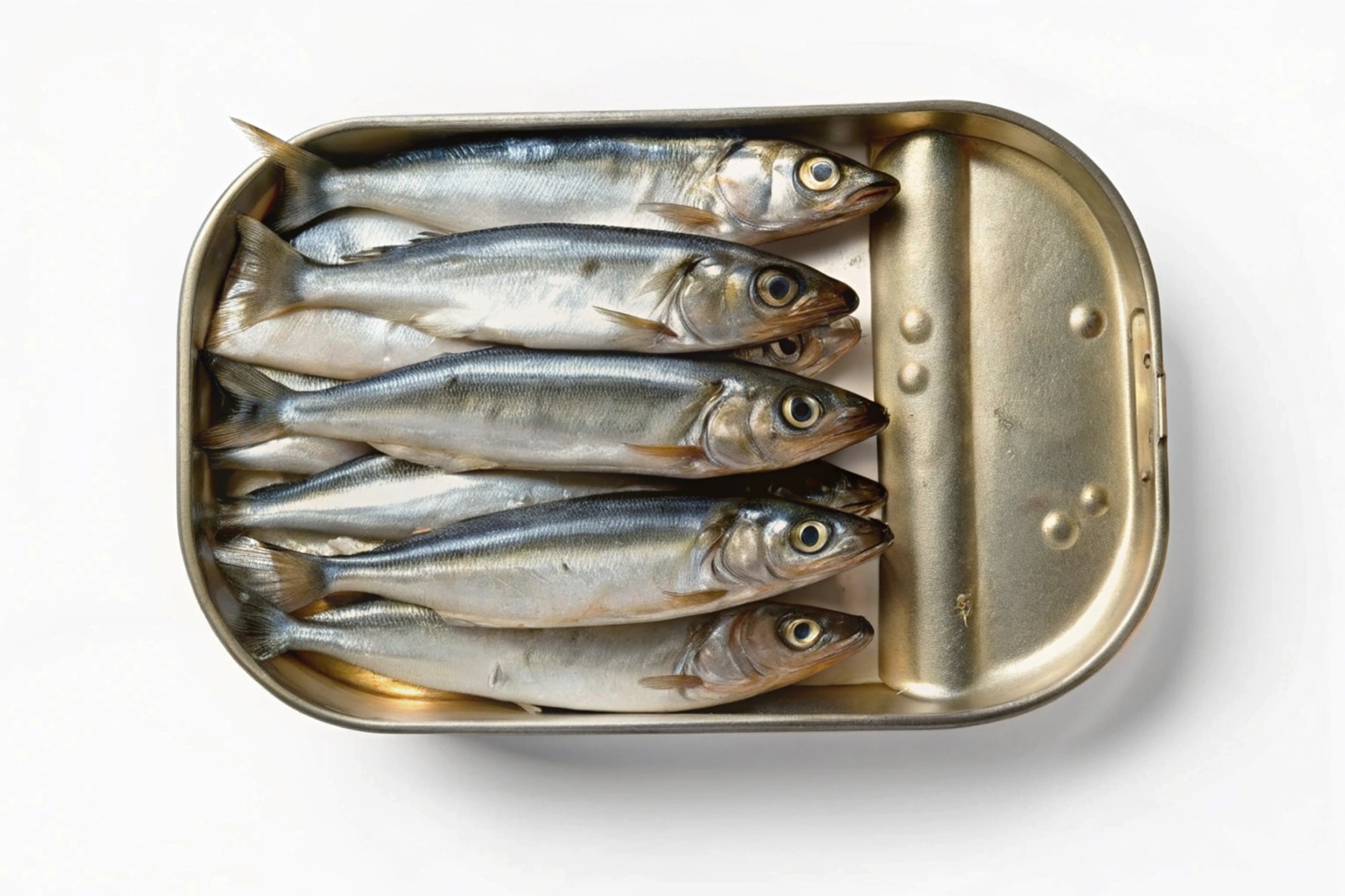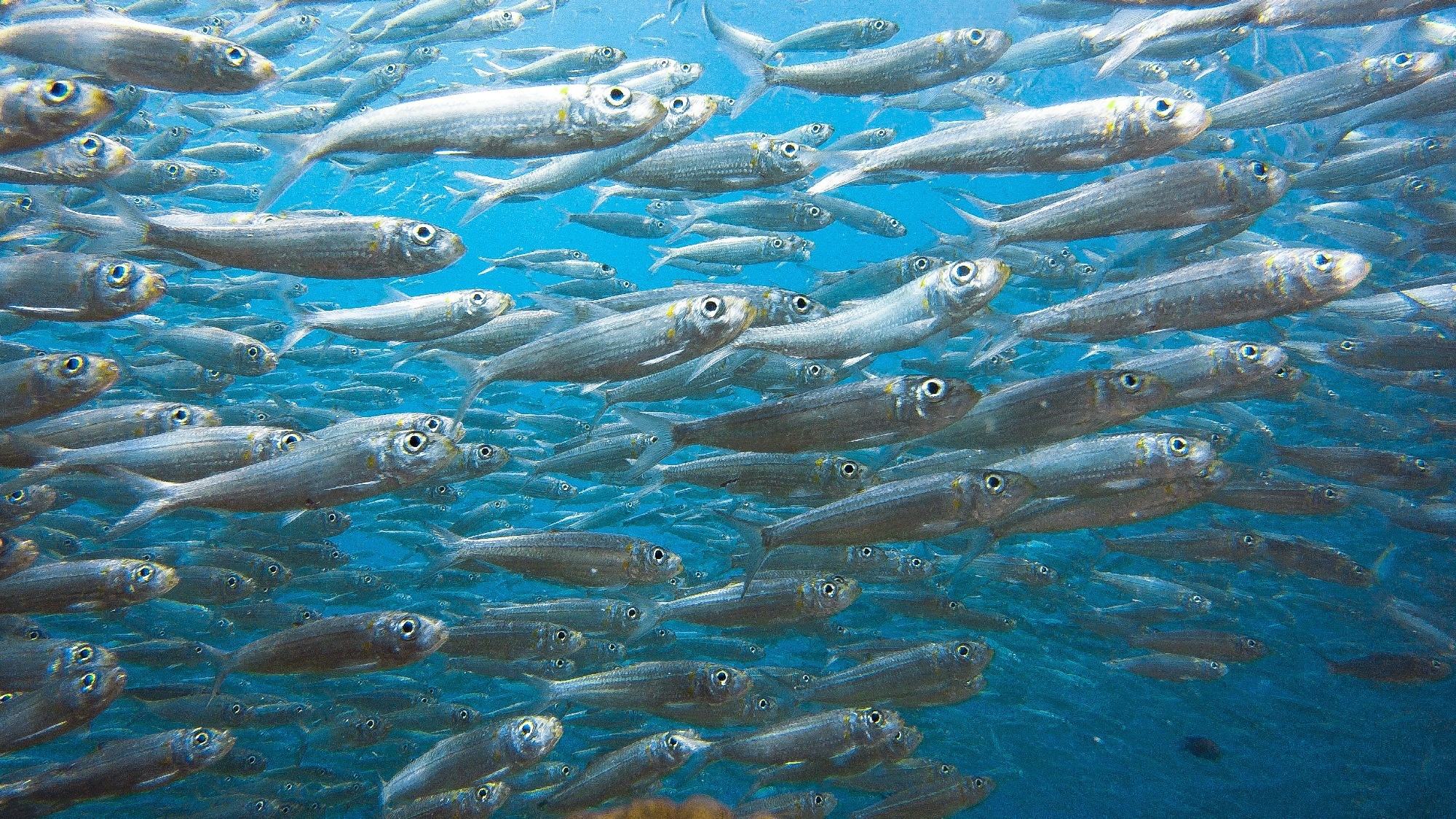Introduction
What Are Sardines?
Top Health Benefits of Sardines
Sustainability
Affordability
How to Eat Sardines
Who Should Be Cautious?
Video: Sardines for 100 days?!
References
Packed with omega-3s, protein, and bone-boosting nutrients, sardines are a powerful yet budget-friendly superfood.
 Image Credit: Maria Alam Sraboni / Shutterstock.com
Image Credit: Maria Alam Sraboni / Shutterstock.com
Introduction
As an oily fish, sardines are naturally rich in omega-3 polyunsaturated fatty acids (PUFAs), particularly eicosapentaenoic acid (EPA) and docosahexaenoic acid (DHA), which support heart, brain, and metabolic health. Sardines are also rich in essential nutrients that reduce inflammation, support bone health, and improve cardiovascular outcomes.
Unlike fish oil supplements, sardines provide nutrients in a whole-food form that is easily accessible and well-tolerated. The growing popularity of sardines reflects a shift toward natural, nutrient-rich options that promote long-term health. Though sardine consumption is associated with cardiovascular benefits, most supporting data remain observational, with a limited number of small RCTs.1
What Are Sardines?
Sardines are small, oily fish that may be consumed fresh or canned in oil or tomato sauce. Belonging to the herring family, sardines are known for their high PUFA content, as well as calcium, iron, magnesium, potassium, phosphorus, vitamin D, and vitamin B12 levels.
A 100-gram serving of cooked sardines provides about 382 mg of calcium, equivalent to 38% of the daily recommended intake. It also contains 2.9 mg of iron, 490 mg of phosphorus, and 8.9 µg of vitamin B12, all of which support bone health, red blood cell formation, and cardiovascular function.
 School of sardines. Image Credit: SaltedLife / Shutterstock
School of sardines. Image Credit: SaltedLife / Shutterstock
Top Health Benefits of Sardines
Rich in Omega-3 Fatty Acids
Sardines are rich in PUFAs, which play a critical role in reducing chronic inflammation, lowering blood pressure, and improving lipid profiles. These fats also enhance brain function and mood by supporting neurotransmitter activity, particularly serotonin and dopamine, which are vital for stress and fatigue regulation. Though direct evidence in sardines is limited, omega-3s are known for these effects in other dietary contexts.1,2
High-Quality Protein
With over 24 grams of protein for every 100-gram serving, sardines offer complete, bioavailable protein that is essential for muscle repair, satiety, and metabolic balance. Sardines are also rich in taurine and arginine, which are amino acids supporting vascular function, blood pressure control, and antioxidant defense systems.1,2
Bone-Boosting Nutrients
Sardines provide 382 mg of calcium for every 100-gram serving, making them a strong dairy alternative. Sardines are also rich in vitamin D, phosphorus, and magnesium, all supporting bone integrity and cardiovascular function.1,2
Packed with Vitamins
Notably high in vitamin B12 at a concentration of 8.9 µg for every 100 grams serving, sardines support red blood cell production, brain health, and sustained energy levels, which is particularly critical in high-stress environments like healthcare.1,2
Low in Mercury
As small, mid-trophic level fish, sardines accumulate less mercury, thus making them a safer alternative for individuals interested in reducing their risk of mercury exposure, such as pregnant women. The selenium content in sardines also counteracts any potential mercury toxicity by preserving antioxidant enzyme function.1,2
Source of Selenium and CoQ10
Sardines provide 52.7 µg of selenium for every 100-gram serving, which supports immune health and deoxyribonucleic acid (DNA) repair. Sardines may provide coenzyme Q10, though precise content is not well established, a compound that enhances energy production in the mitochondria and reduces oxidative stress, a key contributor to fatigue and chronic disease.1,2
Sustainability
Sardines are among the most sustainable seafood options due to their low position on the marine food chain. As small, fast-growing fish that reproduce abundantly, sardines require fewer natural resources and accumulate fewer toxins than larger predator fish.
This ecological efficiency reduces the environmental impact of harvesting sardines and supports healthier ocean ecosystems. Furthermore, most sardines used in the canning industry are sourced through fishing methods that minimize bycatch and support responsible practices.3
Affordability
Canned sardines provide a low-cost and nutrient-rich food option. The canning process extends shelf life, allowing for year-round availability without refrigeration. This extended shelf life, combined with minimal processing, helps keep prices accessible to a wide range of consumers. Canned sardines are particularly useful for those with limited access to fresh seafood or who are seeking convenient and budget-friendly meals.3
Canning also uses less energy than freezing or air-freighting fresh fish. Recent advances in technology, such as variable-temperature sterilization, further reduce energy consumption while maintaining product safety and quality.
Overall, canned sardines represent a practical and environmentally responsible choice that balances nutrition, sustainability, and affordability.3
Take a deeper dive into sardines and health.
How to Eat Sardines
Eating sardines is both nutritious and convenient, with canned and fresh varieties offering unique tastes and textures. Canned sardines are widely accessible, budget-friendly, and have a soft, flaky texture.
The robust and salty flavor of sardines makes them ideal for quick meals. In contrast, fresh sardines provide a milder, sweeter taste and a firmer texture, thus making them suitable for grilling or pan-frying.
Both fresh and canned sardines are excellent sources of omega-3 fatty acids and protein. However, canned sardines often have slightly higher calcium content due to the presence of edible bones.1
Sardines are versatile and easy to incorporate into everyday meals. A simple and delicious way to enjoy sardines is by placing the fish on toasted bread or crisp crackers, topped with fresh herbs, a squeeze of lemon juice, or a dollop of mustard for added flavor.
Incorporating sardines into salads, pasta dishes, or grain bowls elevates their nutritional profile and provides a satisfying depth of flavor. Toss sardines into leafy greens with tomatoes and olives for a Mediterranean-inspired salad, or stir them through pasta with garlic and chili flakes for a flavorful, quick dinner.4,5
For a creative twist, mash sardines into spreads or form them into patties. Combine sardines with mayonnaise, mustard, or Greek yogurt, adding herbs or spices to create a savory spread perfect for sandwiches or dips. Alternatively, mixing sardines with breadcrumbs, herbs, and an egg, then pan-frying them, yields delicious, protein-rich patties.
Popular flavor pairings include tangy lemon, fresh herbs like parsley or dill, robust mustard, and acidic tomatoes, enhancing sardines’ natural richness and umami flavor.4,5
Who Should Be Cautious?
Although sardines offer numerous health benefits, certain individuals should exercise caution. For example, the high sodium content in canned sardines can elevate blood pressure levels, thereby increasing the risk of cardiovascular disease. Thus, individuals with hypertension, kidney disease, or those on sodium-restricted diets should carefully read nutrition labels and consume low-sodium or fresh alternatives when possible.1
Sardines contain thermostable allergens like parvalbumin and tropomyosin, which maintain their allergenic properties, even after the canning process. Over 50% of fish-allergic individuals experience allergic reactions to canned sardines, thus demonstrating that canned products are not universally safe for allergic patients. Allergenicity varies by individual, and tolerance to canned sardines cannot be assumed.6,7
Individuals with gout should also limit their consumption of sardines due to the high purine content in these fish. Purines metabolize into uric acid, which can exacerbate gout symptoms or induce attacks in susceptible individuals. Regularly consuming sardines may also increase uric acid levels, thus necessitating moderation or consultation with a healthcare provider.6,7
Sardines for 100 days?!
Sardines for 100 days?!
References
- Santos, H. O., May, T. L., & Bueno, A. A. (2023). Eating more sardines instead of fish oil supplementation: Beyond omega-3 polyunsaturated fatty acids, a matrix of nutrients with cardiovascular benefits. Frontiers in Nutrition, 10, 1107475. DOI: 10.3389/fnut.2023.1107475, https://www.frontiersin.org/articles/10.3389/fnut.2023.1107475/full
- Kalogerakou, T., & Antoniadou, M. (2024). The role of dietary antioxidants, food supplements and functional foods for energy enhancement in healthcare professionals. Antioxidants, 13(12), 1508. DOI: 10.3390/antiox13121508, https://www.mdpi.com/2076-3921/13/12/1508
- Pais-Costa, A. J., Marques, A., Oliveira, H., Gonçalves, A., Camacho, C., Augusto, H. C., & Nunes, M. L. (2025). New perspectives on canned fish quality and safety on the road to sustainability. Foods, 14(1), 99. DOI: 10.3390/foods14010099, https://www.mdpi.com/2304-8158/14/1/99
- Hunt, K. (2021). Luscious, Tender, Juicy: Recipes for Perfect Texture in Dinners, Desserts, and More. The Countryman Press. Link
- Pérez-Lloréns, J. L., Acosta, Y., & Brun, F. G. (2021). Seafood in Mediterranean countries: A culinary journey through history. International Journal of Gastronomy and Food Science, 26, 100437. DOI: 10.1016/j.ijgfs.2021.100437, https://www.sciencedirect.com/science/article/pii/S1878450X21001360?via%3Dihub
- Taki, A. C., Ruethers, T., Nugraha, R., Karnaneedi, S., Williamson, N. A., Nie, S., Leeming, M. G., Mehr, S. S., Campbell, D. E., & Lopata, A. L. (2023). Thermostable allergens in canned fish: Evaluating risks for fish allergy. Allergy, 78(12), 3221–3234. DOI: 10.1111/all.15864, https://onlinelibrary.wiley.com/doi/10.1111/all.15864
- Helget, L. N., & Mikuls, T. R. (2022). Environmental triggers of hyperuricemia and gout. Rheumatic Disease Clinics of North America, 48(4), 891–906. DOI: 10.1016/j.rdc.2022.06.009, https://www.sciencedirect.com/science/article/pii/S0889857X22000497
Last Updated: May 13, 2025